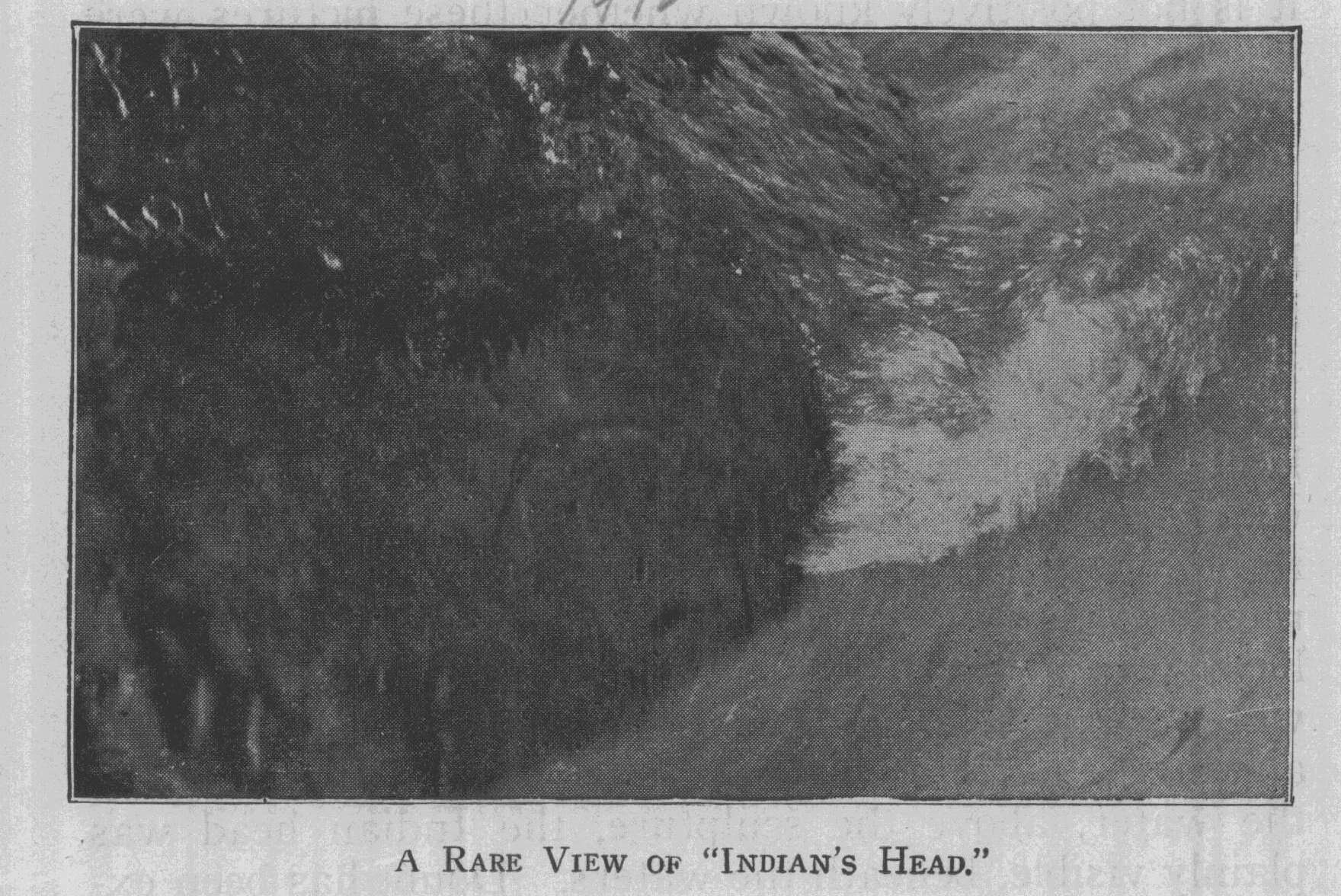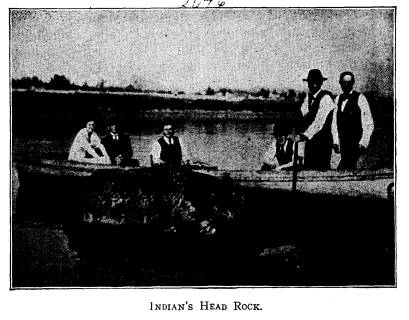Ohio History Journal
THE INDIAN'S HEAD
HENRY BANNON
The white man, when he first crossed
the Allegheny
Mountains and entered the Ohio Valley,
found many
crude drawings of the figures of men and beasts on the
rocks, along the Guyandotte and Ohio
rivers. Of course
it is not positively known whether
these pictures were
the work of Indians or of some tribes
that preceded the
Indians. On the Kentucky shore, about
opposite the
foot of Bond Street, Portsmouth, Ohio,
there still stands
one of these inscribed rocks, known as
the "Indian's
head." A hundred years ago, this
rock, and the Indian
head cut in it, could be seen when the
river was low.
But, owing to changes in the channel of
the river, the
rock is now visible only when the river
is exceedingly
low. And the face, carved on the rock,
is beneath the
water, even at its lowest stages. On
September 9, 1894,
the Ohio River was so low that about
two feet of the
rock was above the surface of the
water; and the Indian
head was about ten inches below the
surface of the
water. The head could be easily traced
with the hand;
and, in the morning, when the rising
sun shone fairly on
the water, above the sculpture, the
Indian head was
plainly visible, beneath the waters.
Doubt has been ex-
pressed as to this figure's being the
work of ancient
tribes. There is a tradition that stone
was quarried
from the hill above it, during pioneer
days, and that a
quarryman carved the Indian face.
Squier and Davis
in "Ancient Monuments of the
Mississippi Valley"
(1847) thus described it:
"It consists of a colossal human
head cut in outline, upon the
vertical face of a large rock extending
into the river. It is al-
ways under water, except when the river
is at its very lowest
stages, and is not exposed oftener than
once in four or five years.
(71)

